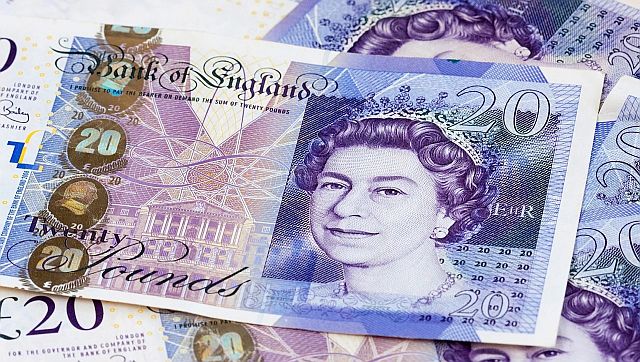London: Sterling on Monday plunged to a record dollar low nearing parity on surging fears about a long-lasting UK recession. Economists expressed concerns that last week’s huge tax-cutting budget by the new British government, aimed at helping the economy, could actually spark massive borrowing and further fuel inflation. The pound on Monday struck an all-time low at $1.0350. Here is a chronology of key events in the history of Britain’s currency: 1971: End of Bretton Woods agreement Sterling has existed since the Middle Ages, making it one of the world’s oldest currencies. Between 1944 and 1971, under the Bretton Woods agreement, it is pegged to the dollar. Following the end of the peg, the pound starts to fluctuate daily, from $2.4 in 1971 to a post-Bretton Woods high of $2.644 a year later. 1976: Pound crisis Following the oil shock of 1973 that sent crude prices and wider inflation soaring, the UK won a bailout from the International Monetary Fund that sent the pound plunging to $1.6. A period of austerity demanded by the International Monetary Fund (IMF), applied even more vigorously from 1979 when Margaret Thatcher became prime minister, saw sterling hit $2.4460 in 1980. 1985: Record low and Plaza agreement The pound resumes its slide as the greenback wins support from its reserve currency status, with sterling tanking to an all-time low at $1.0520. Major powers then agree to voluntarily depreciate the dollar in the Plaza agreement. Britain, France, Germany, Japan and the United States seal the deal at the New York Plaza hotel, ending the strong dollar era which brought the US industry to its knees. The pound rises back to $1.4 by the end of that year. 1992: ‘Black Wednesday’ crash In 1990, the pound joins the European Exchange Rate Mechanism (ERM), a system designed to help countries eventually adopt the euro. However, Britain is forced to pull the sterling out of the ERM in September 1992 as investors like George Soros bet heavily against the currency. “Black Wednesday” sparks a market earthquake, sending the pound crashing from $2 in September to less than $1.5 by the end of the year. 2007: Slide under $2 on the financial crisis The pound recovers as the global economy sees its longest period of growth following the Second World War. Sterling hits $2.1 in 2007 but falls under $2 a year later as the global financial crisis takes hold. 2016: Brexit and ‘flash crash’ Following Britain’s surprise vote in favour of exiting the European Union, the pound freefalls from $1.5 to $1.3 on 24 June. In October, it tumbles to $1.2, the result of a “flash crash”, said to have been caused by high-frequency trading propelled by algorithms or possibly just human error. 2020: COVID In March 2020, sterling strikes $1.1412, the lowest since 1985, as the COVID pandemic takes hold worldwide. The pound also suffers from troubled post-Brexit trade negotiations. 2022: Ukraine The pound suffers turbulent losses, culminating in a series of 37-year lows against the greenback in September. Sterling is propelled lower by worries of a prolonged economic downturn as energy prices rocketed following the invasion of Ukraine by major oil and gas producer Russia. On 26 September, a few days after a landmark budget from Finance Minister Kwasi Kwarteng, traders send the pound tumbling to a record nadir against the dollar in a blow for new Prime Minister Liz Truss. Read all the Latest News , Trending News , Cricket News , Bollywood News , India News and Entertainment News here. Follow us on Facebook, Twitter and Instagram.
The British pound has fallen to a record low against the dollar, surging fears about a long-lasting UK recession
Advertisement
End of Article


)

)
)
)
)
)
)
)
)



